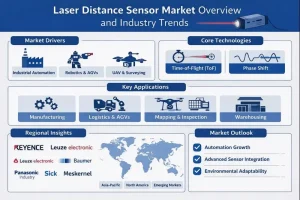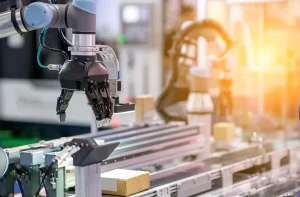US Manufacturing Index Shows Growth: What This Means for the Economy
The manufacturing index recently showed promising signs of growth, providing a beacon of hope for the US economy amid global uncertainties. This development is important not only for industry insiders but also for investors, policymakers, and consumers alike. Understanding the manufacturing index and its implications can shed light on the health of the US economy and the potential trajectory of economic recovery and expansion.
What Is the Manufacturing Index?
The manufacturing index typically refers to a composite indicator that measures the activity and performance of the manufacturing sector. It is often derived from surveys conducted among purchasing managers or industrial operators, who report on factors like new orders, production levels, employment, supplier deliveries, and inventory. One of the most widely followed manufacturing indexes is the Purchasing Managers’ Index (PMI), which provides a monthly snapshot of manufacturing sector health.
When the manufacturing index reads above 50, it generally indicates expansion in the sector, while readings below 50 suggest contraction. In recent months, the US manufacturing index has moved decisively above the 50 mark, signaling sustained growth.
Recent Trends in the US Manufacturing Index
Several recent reports from industry groups and financial institutions have highlighted an uptick in the US manufacturing index. This increase reflects growing production volumes, rising new orders from both domestic and international markets, and improvements in supply chain conditions.
This momentum coincides with a variety of positive economic signals: employment in manufacturing has also edged higher, while consumer spending on durable goods continues to rise. The index signals that manufacturers are confident about future demand, which is crucial since manufacturing is a bellwether for broader economic activity.
Key Drivers Behind the Manufacturing Index Growth
Several factors have contributed to the rise in the manufacturing index:
1. Rebound in Consumer Demand
Following periods of economic slowdown, consumers are increasingly spending on items such as vehicles, appliances, and tech gadgets—all products heavily reliant on manufacturing. The easing of pandemic-related restrictions and stimulus measures have helped fuel this demand.
2. Improvements in Supply Chain Dynamics
Over the past few years, supply chain disruptions caused delays and bottlenecks that weighed heavily on manufacturing output. Recently, companies have adapted through diversification of suppliers, technological upgrades in logistics, and increased inventory stocking. These improvements have helped manufacturers meet demand more efficiently.
3. Rising Exports and International Trade
Rising demand for American-made goods abroad has further boosted manufacturing. Trade agreements, shifts in global supply chains, and a competitive US dollar have encouraged international buyers to turn to US products, supporting overall production levels.
4. Advances in Technology and Automation
The adoption of advanced technologies and automation in factories has translated into higher productivity and better quality control. These innovations enable manufacturers to reduce costs and increase output, contributing directly to the health of the manufacturing index.
What Does the Growing Manufacturing Index Mean for the Economy?
The manufacturing sector represents a significant component of the US economy—in terms of jobs, GDP contribution, and innovation. A growing manufacturing index generally bodes well for the broader economy for several reasons:
-
Job Creation: Manufacturing growth leads to more hiring, not only on factory floors but also in related sectors like logistics, engineering, and sales. This supports overall employment levels and wage growth.
-
Investment Signals: Confidence in manufacturing growth encourages businesses to invest more in equipment, research, and facilities. Increased capital expenditure drives innovation and long-term productivity improvements.
-
Economic Multiplier Effect: Manufacturing has one of the highest multipliers in the economy, meaning growth in this sector stimulates demand for raw materials, services, and retail, thereby boosting other parts of the economy.
-
Market Confidence: Investors often view a rising manufacturing index as a sign of economic health, which can lead to more robust stock markets and greater capital inflows.
Challenges Still Linger
Despite the positive signals, some challenges remain. Inflationary pressures continue to affect the cost of raw materials and energy, posing risks to profit margins. Labor shortages and evolving global trade tensions also inject uncertainty into the manufacturing outlook.
Moreover, while the manufacturing index has improved, growth rates can be volatile and influenced by short-term disruptions such as natural disasters or geopolitical developments.
Looking Ahead: Is the US Manufacturing Index Poised to Keep Growing?
Most experts remain cautiously optimistic about the US manufacturing index in the coming quarters. If current trends in consumer demand, supply chain resilience, and technological advancement continue, manufacturing growth is likely to remain steady.
Policymakers also recognize the importance of a vibrant manufacturing sector, with initiatives aimed at promoting domestic production, infrastructure investment, and innovation incentives all playing a role in supporting growth.
Conclusion
The recent rise in the US manufacturing index highlights a sector that is regaining its strength and signaling broader economic resilience. For stakeholders across the board, continued monitoring of the manufacturing index will provide valuable insights into the direction of the economy. By understanding the factors behind the growth and the challenges ahead, businesses and policymakers can better navigate the evolving economic landscape. Ultimately, a strong manufacturing sector is a crucial pillar supporting sustainable economic prosperity for the United States.




